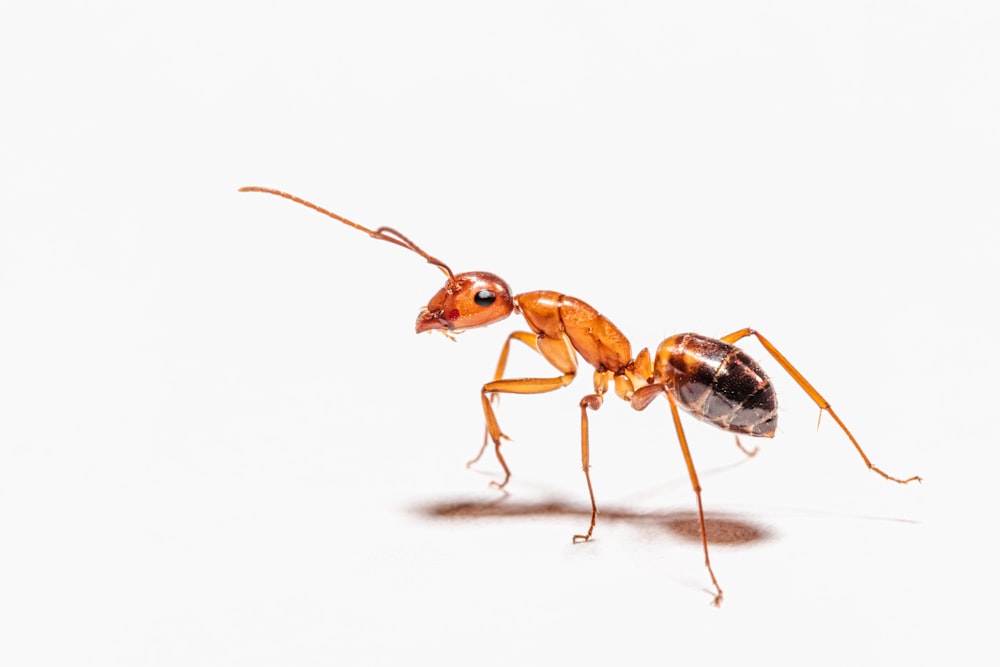Ants are sociable insects that live in colonies. Their colonies are highly organized communities. Ants come in over 10,000 different varieties. Ants can be found practically anywhere on the planet, however, they are mostly found in hotter places.
Intro to Ants, And the History of Ants
Ants were first found on the planet between 140 and 170 million years ago.
Ants are available in sizes from 0.08 inches to beyond 2 inches.
They are found in black, red, and yellow colors.
The ant’s body is divided into its Head, Thorax (the middle part), and Abdomen.
The abdomen is thin and oval-shaped, and the head is big (very big compared to other species in relative body composition).
Ants have a tiny waist that connects the thorax and the belly.
Their mouth is the most important tool for most species of ants and ant colonies.
Ant evolution shows that ants have jaws divided into inner and outer pairs.
With their jaws, the ants eat, carry food, and fight.
Ants also have two antennae on top of their head. These are used for navigation, communication, and scent.
Scent plays a huge role in an ant colony; it’s actually how they recognize each other and neighboring ant colonies!
Ants don’t have the space to accommodate a complicated respiratory system like humans due to their tiny size.
Instead, they have developed their own respiration methods to assist in delivering oxygen throughout their bodies.
History Of Ants
Ants were first found on the planet between 140 and 170 million years ago.
This was the Jurassic period, when dinosaurs ruled the globe and plant life was mostly ferns and pines.
According to fossil record and ant biology, many believe that all the different ant species in the ant family tree evolved from one single common ancestor.
Ants were few compared to other bugs until roughly 100 million years ago when flowers began to bloom and create fruits.
Flowering plants supplied ants and their relatives with a huge range of new sources of food and homes.
Many ant species have developed over time to fill various environmental niches.
Some made their homes in the rainforest, others in the fallen leaves, and many built their homes in the trees.
Others ate bugs that fed on these flowering plants, while others searched for plant fruits, seeds, and leaves.
Climate Change And Continental Shift
The Planet’s continents were bunched together into two “supercontinents” during the time when ants began to diversify.
These continents were called Gondwana and Eurasia.
These two supercontinents continued to drift away and break up over time, resulting in the continents we see today.
These continents endured temperature changes as they migrated across the globe and geological processes like mountain formation and volcanic activity.
Animals and plant species that lived on these shifting continents eventually adapted or went extinct due to the shifts.
The Ant Specie Today
Ants succeeded in surviving and prospering through all of these geographical and climatic transitions, eventually conquering nearly every land on the planet.
Studies have discovered over 12,500 species so far, but they estimate that another 10,000 varieties will be discovered in the future.
While ant society is in-depth, it can simply be broken down to the queen, worker ant, and other males.
Ants, the most common insect on the planet, are so common in the tropics that their biomass exceeds all vertebrate species by a factor of two!
So, what is their formula for success?
Their DNA record contains the truth.
Ant DNA reveals how much they have adjusted and developed in response to climate, geology, and geographical changes throughout their long existence.
Researchers can understand more about the features that make distinct ant species and other similar insects more resilient or sensitive to environmental difficulties by researching the DNA of ants.
This can also help the researchers predict possible reactions to events like climate change.
Many ants feed on carbohydrate-rich flowering plants.
Carpenter ants build protective shelters at the root of plants to protect themselves from other insects and secure their food supply.
Ants that live in hot, arid environments have developed strategies to store food in order to withstand extended periods of drought.
Honey pot ants store their food in their own bodies.
Some worker ants compete with one another for food.
Army ants have thick antennae on their heads that help them survive conflicts with other ants.
Odontomachus, or trap-jaw ants, close their hunting jaws so swiftly that you can hear them click shut.
Slave-raiding ants take tiny ants (or insects) from the nests of their neighbors.
Final Thoughts
In this article, we discussed all ants, their features, the different kinds of ants and their roles as well as the history of ants.
We hope that this article helped in learn new things about ants and the mighty creature that it is!
Other Posts On Answering Ant Questions
When it comes to ants, there are a ton of different questions.
We have some posts that answer some of the common and most well-known ant questions.
Those posts are in this list here:





